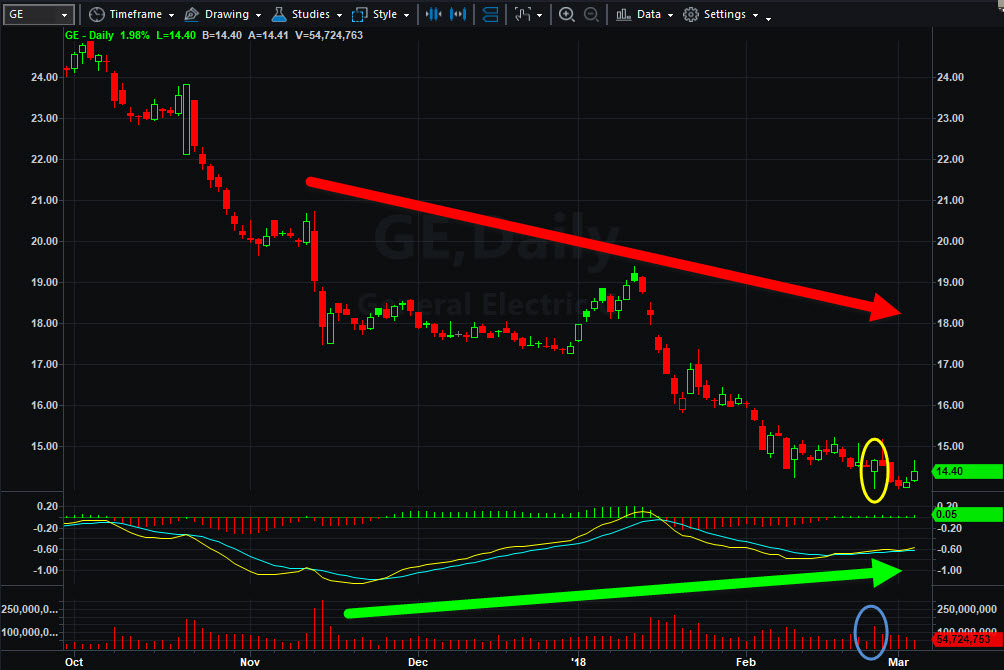This post is for education purposes only and should not be interpreted as a trade recommendation.
General Electric (GE) has been a member of the Dow Jones Industrial Average for over a century, and at one point was the biggest company in the world.
As most traders know, the iconic blue-chip has fallen on hard times more recently. Analysts and investors said it had too many businesses, too much debt and not enough good ideas. Leadership lost shareholders’ confidence. A sharp downward spiral began in early 2017 and proceeded to erase more than half its value by last month.
But now some technical patterns may be suggesting a turn. First, GE had an “outside day” on February 26. (Yellow circle on chart.) That’s when a stock makes both a higher high than the previous session and a lower low. It’s often viewed as a reversal pattern — potentially indicating the end of either a decline or a rally.
Next, volume spiked on that outside day amid a flurry of news. (Blue circle on chart.) Management restated earnings, changed accounting practices and added turnaround experts to its board. Did new buyers enter the name after those changes were made, hoping that the worst of the selling is over?
“Momentum is starting to change in GE to the bullish side,” Bennett McDowell of TradersCoach.com said last week as the stock held $14. “We could be due for a rebound in the next month or so up into the $20s.”

OK so how to measure momentum? Some TradeStation customers use the moving average convergence-divergence indicator (MACD). One school of thought says MACD can anticipate a reversal when it starts to move in the opposite direction of the closing prices. Interestingly, this has happened since November in GE. (See red and green arrows on chart.) Technicians often call this “bullish divergence” when it happens on a downward-trending stock. (It can be considered “bearish” when MACD falls on a rising chart.)
Another pattern some traders may be watching is “support” — a long-term price level where buyers are likely to step in. It just so happens that GE also held $14 in July 2010 and October 2011. Both times, the shares rallied toward $20 in the next 5-6 months.
Veteran chart watcher John Person of Person’s Planet wasn’t convinced. He called last week’s outside day a “reactionary low,” and warns of downside risk toward $12.75 or even $12.22. “Some folks might want to buy one-third” of a potential holding at current levels, he said. Both Person and and McDowell are frequent guest on TradeStation’s daily Morning Market Briefing webinar.
In conclusion, GE’s been under pressure for a long time. But it’s a new year, new events have been announced, and some chart patterns may signal a turn.
This post is for education purposes only and should not be interpreted as a trade recommendation.


























